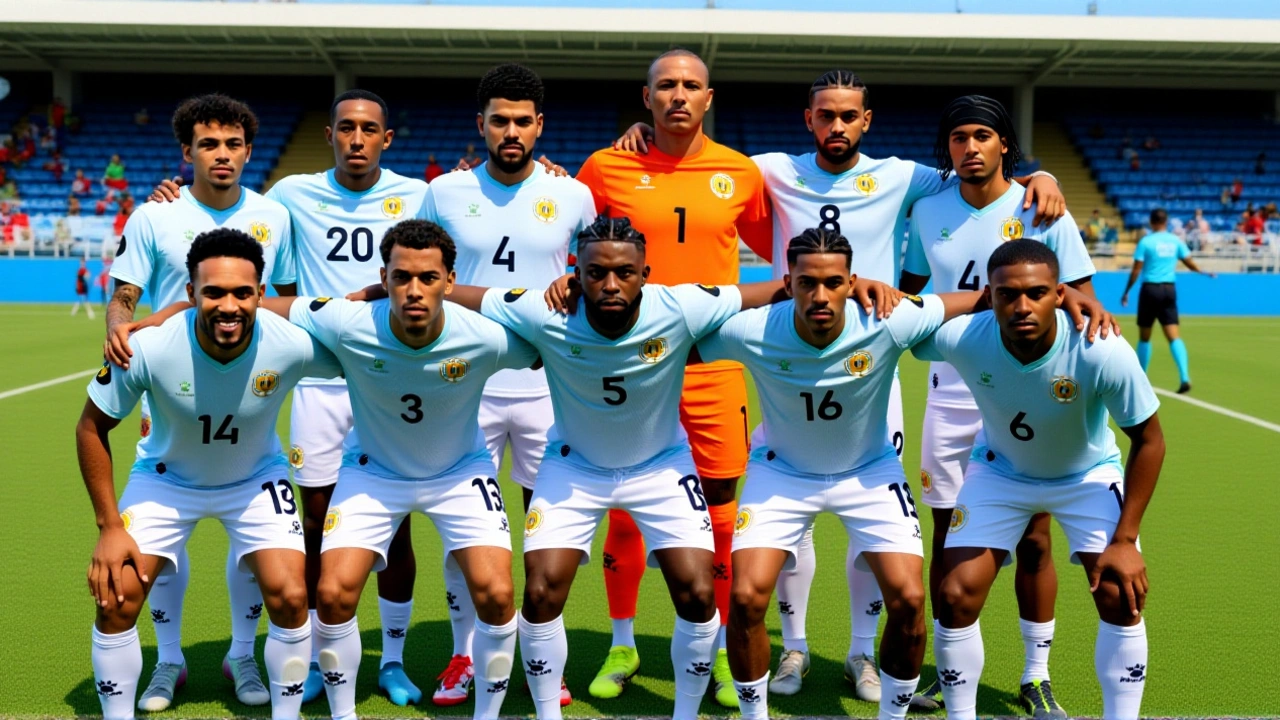When the final whistle blew in late 2025, the tiny island of Curaçao didn’t just win a match — it rewrote history. For the first time ever, the Caribbean nation secured a spot in the FIFA World Cup 2026Canada, Mexico, and United States, completing an unbeaten Concacaf qualifying campaign that stunned football fans worldwide. With a population under 170,000, Curaçao now stands as the smallest country ever to qualify for the tournament, a feat made even more remarkable by the fact that just months earlier, few outside the region had even considered them a serious contender.
A Nation That Refused to Be Ignored
Curaçao’s journey wasn’t built on star power or massive budgets. It was built on grit, community support, and a refusal to accept limits. Their qualifying campaign — which included a dramatic 2-1 win over Jamaica in the final decisive match — ended with a perfect record: six wins, two draws, zero losses. No other team in Concacaf’s qualifying group matched that consistency. As one fan shouted in the post-match footage captured by AFP News Agency, “We did it. Finally, we did it.” Another added, “We’re small, but we’re big at heart.” Those words weren’t just emotion — they were a declaration.The victory came on an unannounced date in late 2025, with celebrations erupting across Willemstad’s streets, in local bars, and even on beaches where families gathered with flags painted on their faces. The island’s only professional stadium, Estadio Antonio Trenidat, couldn’t hold the crowd — so people climbed trees, stood on rooftops, and waved flags from parked cars. It wasn’t just a win. It was a cultural moment.
Why This Matters: The 48-Team Revolution
Curaçao’s qualification is only possible because of the FIFA World Cup 2026Canada, Mexico, and United States’s expansion from 32 to 48 teams. Before this change, smaller nations like Curaçao rarely had a realistic shot. In the old format, Concacaf had just 3.5 slots — and even the top-ranked teams like the U.S. and Mexico fought tooth and nail just to get in. Now, with 6.5 slots allocated to the region, the door opened wider. But opening the door doesn’t mean walking through it. Curaçao didn’t just walk — they sprinted.Their qualification places them alongside other historic debutants: Cape Verde, Jordan, and Uzbekistan. Each of these nations had never reached the World Cup before. But Curaçao’s story stands out because of its size. With fewer people than many U.S. college towns, its team is largely made up of semi-professionals — teachers, mechanics, students — who train after work, often on cracked pitches with no floodlights.

The Players Behind the Legend
No single player carried Curaçao. Instead, it was collective brilliance. Captain Ché Laima, a 29-year-old midfielder who plays in the Dutch second division, scored the decisive goal against Jamaica. Goalkeeper Stefano Bodo, who works as a firefighter in Rotterdam during the off-season, made three game-saving stops in the final qualifier. And then there’s 17-year-old forward Kevin van der Veen, the youngest player on the roster, who came off the bench to create the second goal — a moment that had his grandmother crying in the stands.Coach Wesley Sneijder — yes, that Wesley Sneijder, the former Dutch World Cup finalist — took over in 2023 with a simple mission: “Play with pride, not pressure.” He didn’t bring in flashy imports. He built from within, recruiting players from the island’s youth academies and local leagues. “We didn’t need to be the best,” he told reporters after the match. “We just needed to be the most united.”
What Comes Next?
Now, Curaçao faces the daunting task of preparing for the World Cup stage. Their group opponents won’t be known until the December 2025 draw, but one thing is certain: they’ll be underdogs. Still, that’s nothing new. Their training camp has already begun in Willemstad, with FIFA sending equipment and coaching staff to help. Local businesses have pledged funding — a bakery now donates 10% of sales to the team, and a shipping company is flying them to Europe for friendly matches against lower-tier European sides.Meanwhile, the island’s government has declared a national holiday on the day of their first World Cup match. Schools will close. Public transport will run free. And for one month, the world will watch a place most people couldn’t find on a map — and see why it belongs there.

A Legacy Beyond the Pitch
This isn’t just about football. It’s about identity. For decades, Curaçao existed in the shadow of the Netherlands, its former colonial ruler. Many of its players hold Dutch passports. Some grew up watching Ajax on Dutch TV. But now, they’re representing something entirely their own — a nation that speaks Papiamento, eats keshi yena, and dances to tumba music. Their World Cup run will be broadcast across the Caribbean, in schools from Trinidad to Puerto Rico, inspiring kids who’ve been told they’re too small to dream big.As one elderly fan put it, watching the match on a cracked phone screen in a seaside bar: “They didn’t just qualify for the World Cup. They qualified for our pride.”
Frequently Asked Questions
How did Curaçao manage to qualify despite being so small?
Curaçao’s qualification was made possible by FIFA’s expansion of the World Cup to 48 teams, which increased Concacaf’s slots from 3.5 to 6.5. But more than the format, it was their disciplined, team-first approach under coach Wesley Sneijder. They won all six of their group matches, drew two others, and relied on local talent rather than expensive imports. Their unity and tactical discipline outclassed more resource-rich opponents.
Is Curaçao really the smallest country ever to qualify?
Yes, based on population. With around 165,000 residents, Curaçao is smaller than previous debutants like Iceland (340,000) and Trinidad and Tobago (1.4 million). While some microstates like San Marino and Liechtenstein have tried repeatedly, they’ve never qualified. Curaçao’s population is smaller than many U.S. high schools — yet they’ve reached football’s biggest stage.
What role did the 2026 World Cup expansion play in their success?
The expansion from 32 to 48 teams gave smaller nations a real shot. Before, Concacaf’s top three teams usually took all the spots, leaving little room for underdogs. Now, with more slots and a two-stage qualifying format, teams like Curaçao could climb through the lower tiers and earn a place. Without this change, their qualification would have been nearly impossible.
Who are the key players to watch for Curaçao in 2026?
Captain Ché Laima, the midfield engine who scored the decisive goal against Jamaica, will anchor the team. Goalkeeper Stefano Bodo, a firefighter by day, has been rock-solid under pressure. And 17-year-old Kevin van der Veen, the youngest player, brings explosive pace and creativity. Together, they represent a blend of experience, grit, and youthful energy that could surprise bigger teams.
How is Curaçao preparing for the World Cup?
The team has begun training in Willemstad with FIFA support, receiving equipment and coaching resources. Local businesses are funding their international friendlies, and a shipping company is flying them to Europe for matches against lower-tier teams like Moldova and Georgia. The government declared a national holiday for their first match, and schools are incorporating World Cup prep into their curriculum — turning football into a national lesson in perseverance.
Why is this win so emotional for the Caribbean region?
Curaçao’s win is a beacon for small nations across the Caribbean who’ve long felt overlooked in global sports. Teams from Haiti, Suriname, and St. Kitts have come close but never broken through. This victory proves that size doesn’t determine destiny. For many, it’s not just about football — it’s about dignity, representation, and proving that even the smallest voices can echo on the world’s biggest stage.
